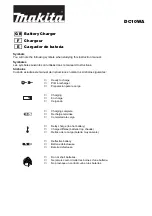
Page | 4
1.0 DELIVERY AND STORAGE
Delivery
Unpack the shipment as soon as it is delivered.
Verify that all of the equipment has been delivered and is in good condition. Check quantities against packing slip and accessories list.
If there is any damaged or missing product, immediately notify the trucking company as well as SBS.
If necessary, clean all parts before assembling.
For all nickel-cadmium batteries shipped in filled and charged condition remove the transport seal* (red plastic film) from the vent cap
prior to installation or charging. Remove the transit polarity caps (blue/red), if mounted on cell terminals as well.
The battery is then ready for installation or storing.
*Warning! The battery must never be charged with the transport seal in place as this can cause permanent damage.
Storage
of a NEW Battery in Filled and Charged Condition
Fully charged nickel-cadmium cells have an open circuit voltage of 1.29 +/-.01 Volts.
Store the batteries in a dry, clean and preferably cool and frost-free location. Do not expose the cells to direct sunlight.
When the batteries are supplied wet and fully charged, storage time is limited. In order to easily charge the batteries after prolonged
storage, it is advised not to store batteries for more than:
• 6 months at 50°F
• 3 months at 68°F
• 2 months at 86°F
An equalizing / refreshing charge shall be carried out according to charging section 3.0 after this time or if the average open cell voltage
drops below 1.20 Vpc. Alternatively cells can be float charged during storage.
A filled and charged battery can be stored for a maximum period of one year. If in storage for more than 6 months the battery must be
discharged to an average cell voltage of 1.0 Volt at 0.2 C
5
Amps, and charged per the initial / commissioning charging procedures.
Failure to do this will affect the batteries capacity.
Storage of a USED Battery in Filled and Charged Condition
If the battery is going to be stored for less than one year:
Fully charge the battery and top up with DM/DI water to the maximum level mark.
Intercell connectors should be removed, cleaned, coated with anti-corrosion grease and stored in a separate package.
Clean the battery thoroughly, and then coat the terminals with anti-corrosion grease.
After removing from storage, the battery should be discharged to an average cell voltage of 1.0 Volt at 0.2 C
5
Amps and then
charged per the initial / commissioning charging procedures.
Storage of a USED Battery in Dry and Discharged Condition
If the battery is going to be stored for more than one year:
The batteries should be fully discharged at 0.2 C
5
Amps, to an end voltage of 0.6 Vpc, and the electrolyte fully drained by
inverting the batteries for about 5 minutes. Use a plastic film to seal the flip top vent cap.
Store the electrolyte in clean, air–tight plastic containers for future use.
Intercell connectors should be removed, cleaned, coated with anti-corrosion grease and stored in a separate package.
Clean the battery thoroughly, and then coat the terminals with anti-corrosion grease.
After removing the battery from storage, fill cells with stored electrolyte, and perform initial / commissioning charging procedure.






























